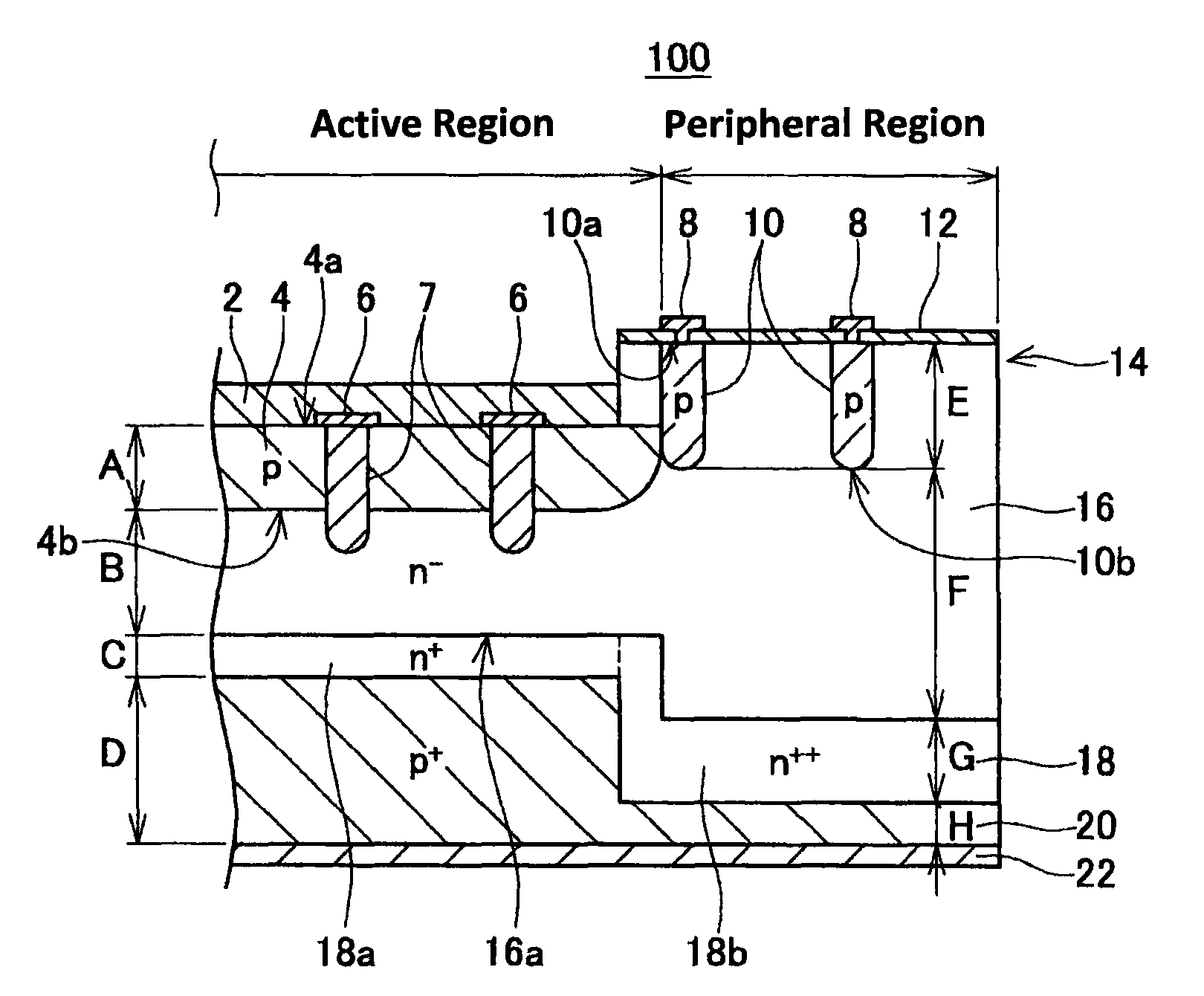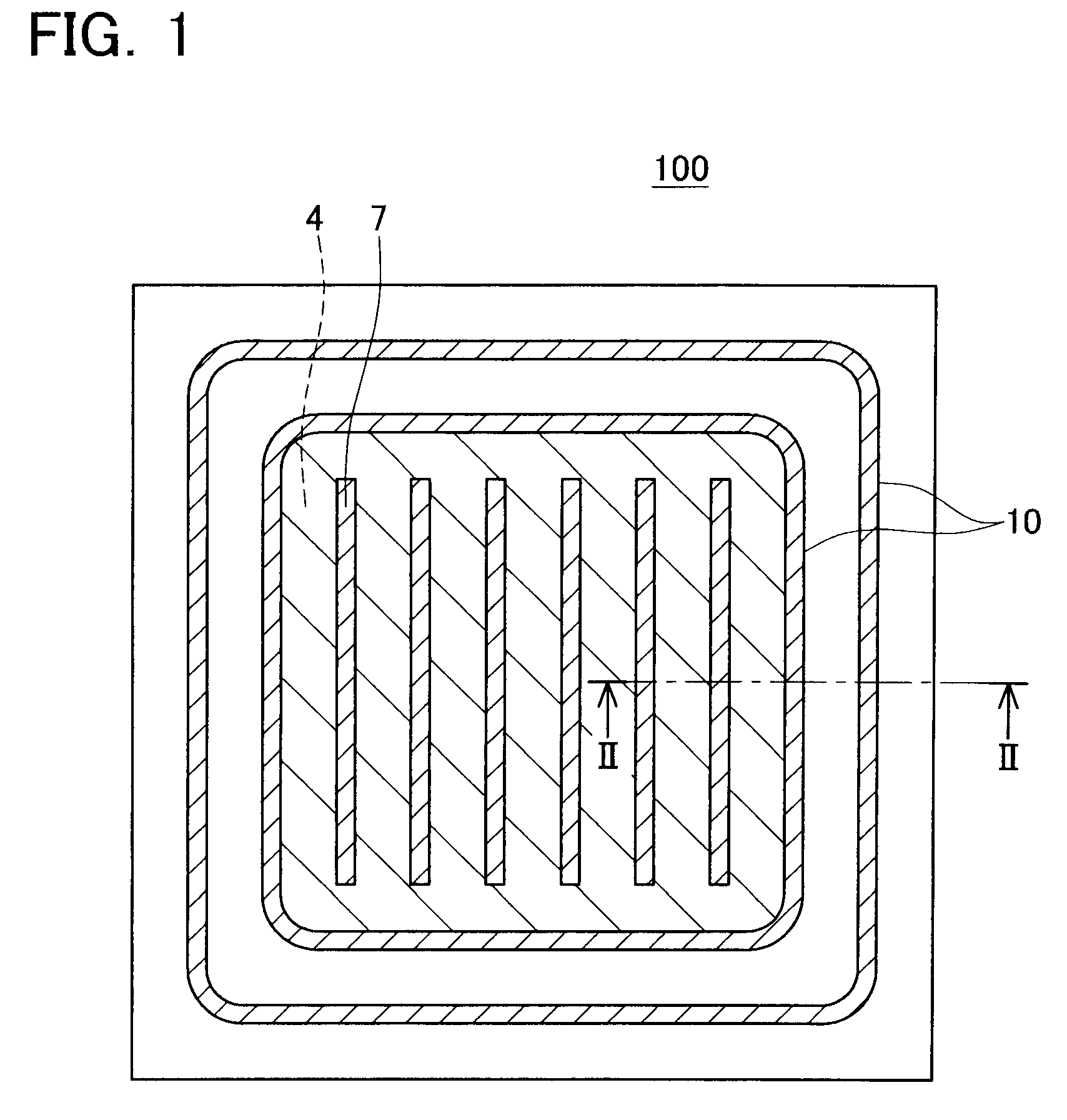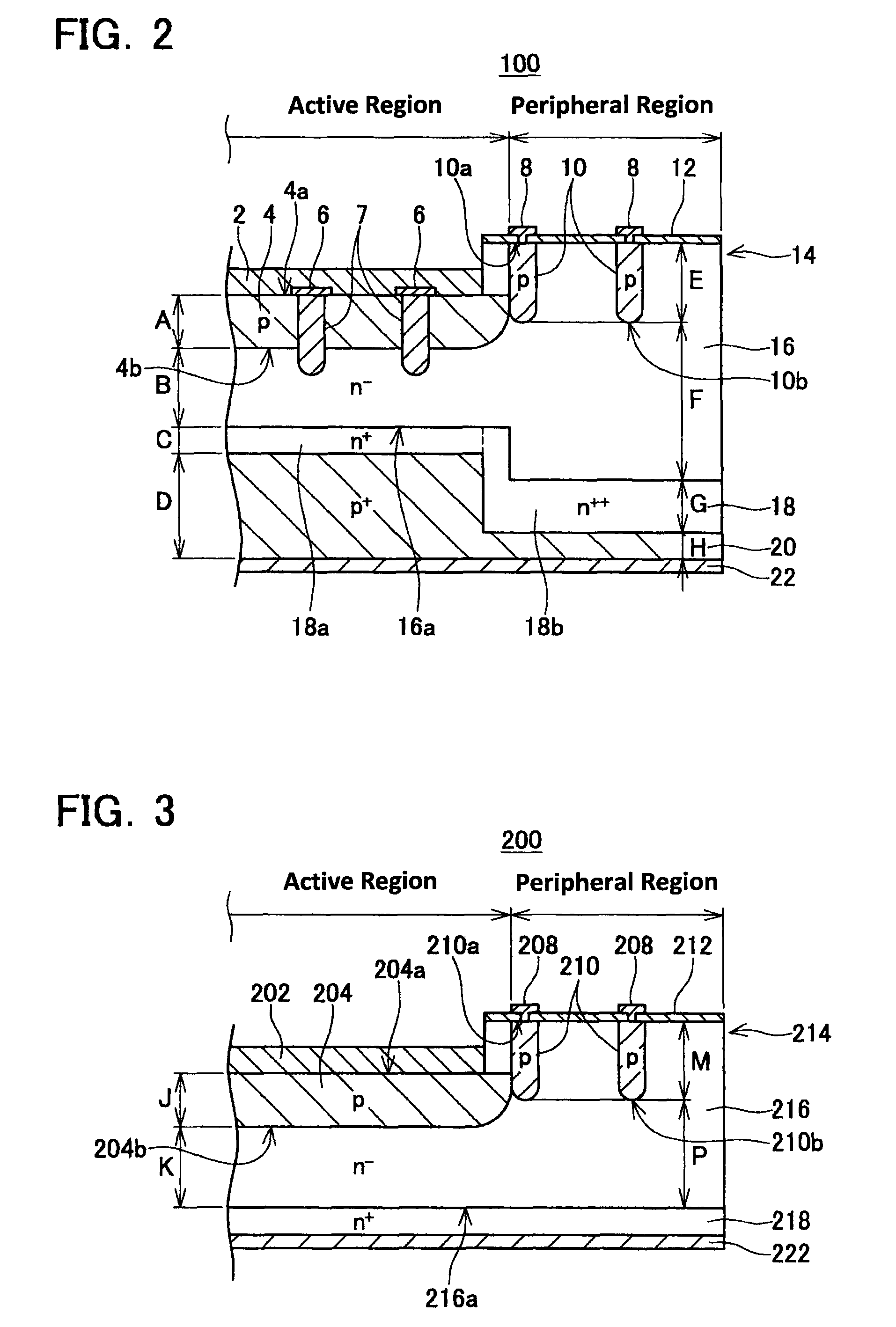IGBT semiconductor device
a semiconductor device and semiconductor technology, applied in semiconductor devices, semiconductor/solid-state device details, electrical devices, etc., can solve the problems of reducing the efficiency of injecting carriers from the collector layer into the drift layer, and the method of patent document 1 cannot be adopted in the igbt, so as to increase the dielectric breakdown strength and increase the on-resistance
- Summary
- Abstract
- Description
- Claims
- Application Information
AI Technical Summary
Benefits of technology
Problems solved by technology
Method used
Image
Examples
first embodiment
[0029]A semiconductor device of the first embodiment will be explained with reference to FIGS. 1, 2. The semiconductor device of the present embodiment is an example in which the present invention has been applied to an IGBT. FIG. 1 is a schematic plan view of an IGBT 100. FIG. 2 is a schematic cross-sectional view of the IGBT 100 viewed along the line II-II of FIG. 1.
[0030]First, an outline of the configuration of the IGBT 100 will be given. The IGBT 100 is formed on a semiconductor substrate 14. Below, the “semiconductor substrate 14” is termed simply “substrate 14”. A metal collector electrode 22 is formed on a back surface of the substrate 14. A p+-type collector layer 20 (third semiconductor layer) is formed on an upper surface of the collector electrode 22, i.e. on a bottom layer of the substrate 14. An n-type buffer layer 18 (high impurity concentration layer) is formed on the collector layer 20. The concentration of the n-type impurities in the buffer layer 18 will be descri...
second embodiment
[0050]Next, a semiconductor device of the second embodiment will be explained with reference to FIG. 3. The semiconductor device of the present embodiment is a diode. FIG. 3 is a schematic cross-sectional view of a diode 200 of the second embodiment.
[0051]The diode 200 is formed on a semiconductor substrate 214 (termed substrate 214 below). A metal cathode electrode 222 is formed on a back surface of the substrate 214. An n+-type cathode region 218 (high impurity concentration layer) is formed on the cathode electrode 222. I.e., the high impurity concentration layer 218 is formed on a bottom layer of the substrate 214. An n-type semiconductor layer 216 is formed on the high impurity concentration layer 218.
[0052]A p-type anode region 204 (first semiconductor region) is formed within a range of a part of a surface layer of the semiconductor layer 216 (in FIG. 3, an upper surface side of the semiconductor layer 216). A p-type guard ring 210 (second semiconductor region) that surrounds...
PUM
 Login to View More
Login to View More Abstract
Description
Claims
Application Information
 Login to View More
Login to View More - R&D
- Intellectual Property
- Life Sciences
- Materials
- Tech Scout
- Unparalleled Data Quality
- Higher Quality Content
- 60% Fewer Hallucinations
Browse by: Latest US Patents, China's latest patents, Technical Efficacy Thesaurus, Application Domain, Technology Topic, Popular Technical Reports.
© 2025 PatSnap. All rights reserved.Legal|Privacy policy|Modern Slavery Act Transparency Statement|Sitemap|About US| Contact US: help@patsnap.com



